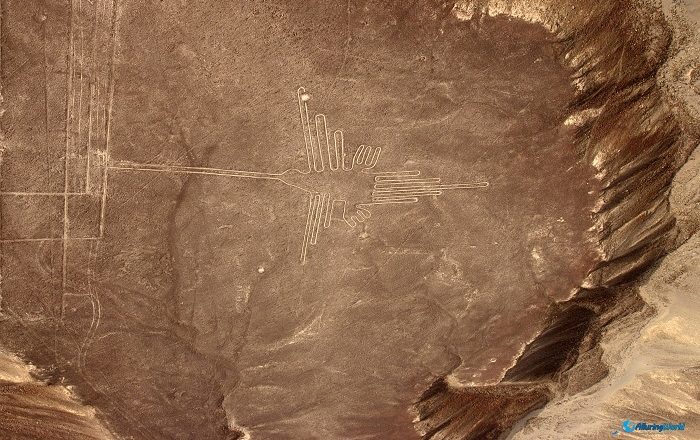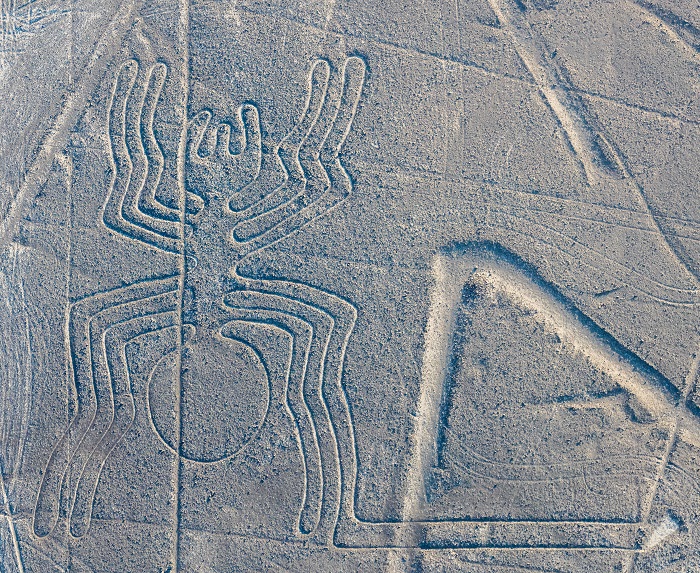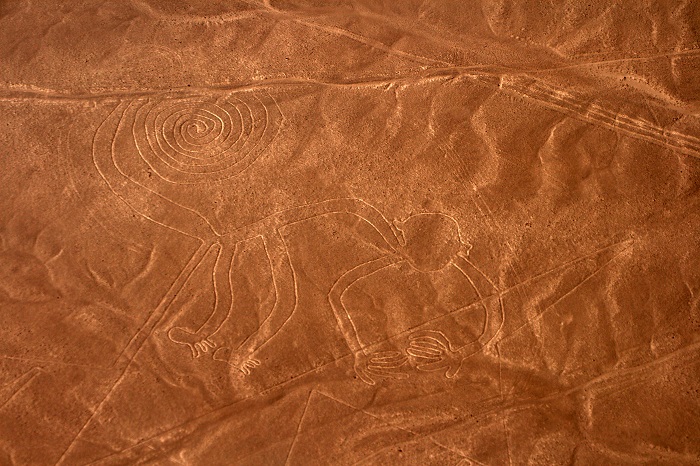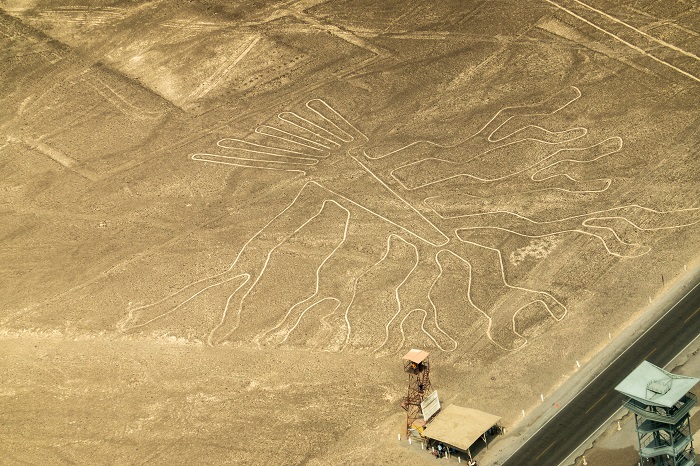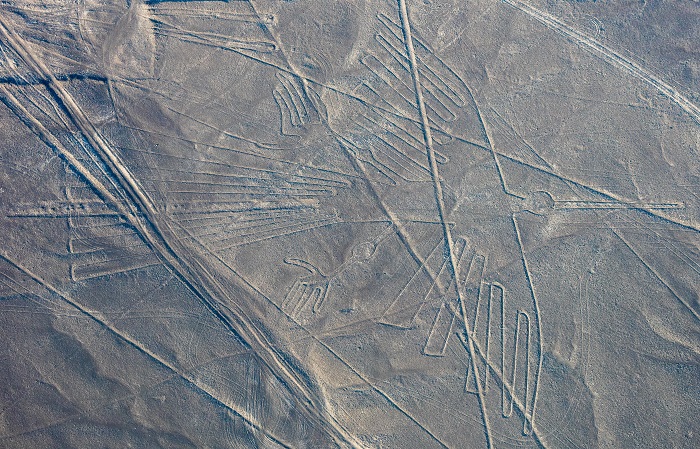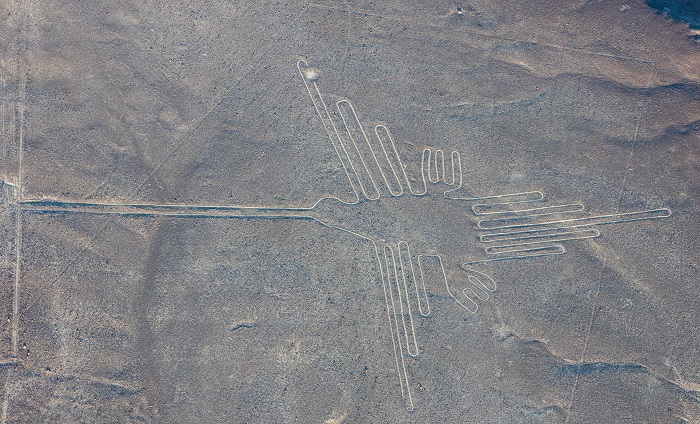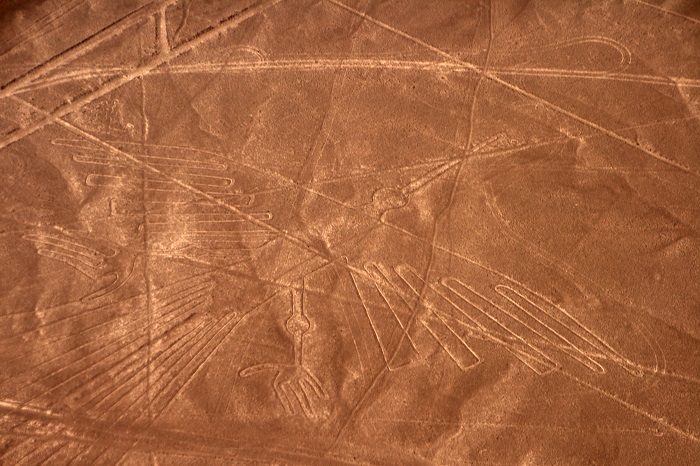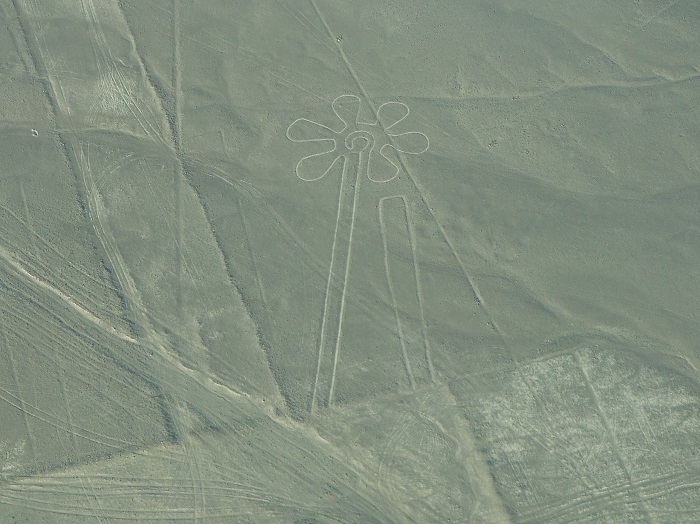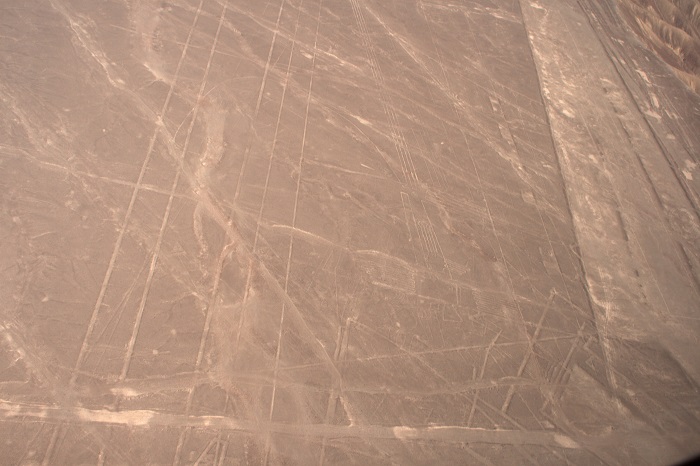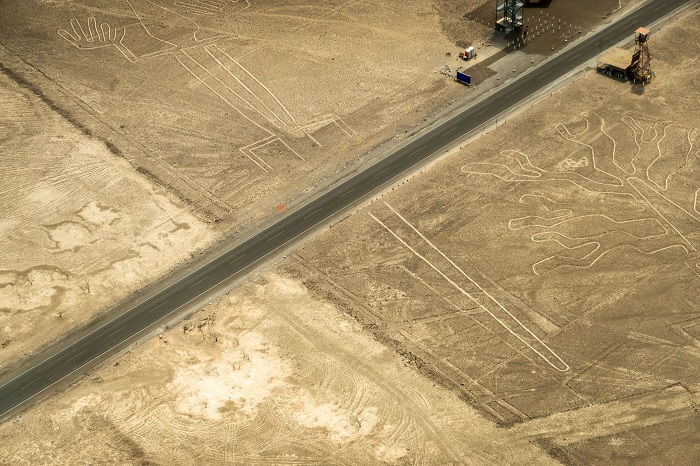The Nazca Lines are a group of geoglyphs that are etched into the desert sands of the Nazca Desert within the southern part of the Republic of Peru. They were created between 500 BC and 500 AD by the Nazca people, a pre-Columbian culture that flourished in the region, who made depressions or shallow incisions in the desert floor, removed pebbles, and left different-colored dirt exposed which made a very unique geoglyph feature.
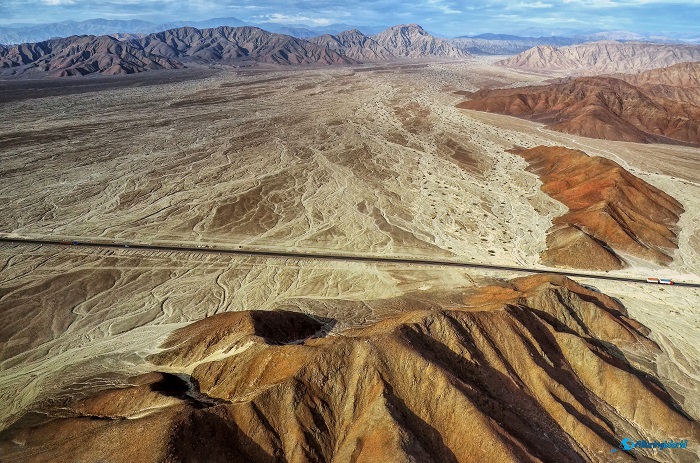
The lines are most visible from the air, and they depict a variety of shapes and figures, including animals, plants, geometric designs, and abstract symbols, making them one of the most enigmatic archaeological sites in the world.
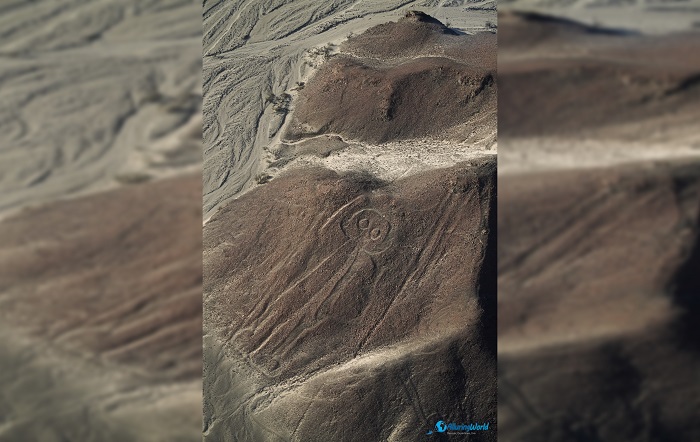
As their purpose is still unknown, and there are many theories about what they might have meant to the Nazca people, some believe that the lines were astronomical calendars, while others believe that they were religious symbols or works of art. In addition, others believe that the lines were used for ritual purposes, such as communicating with the gods or ancestors.
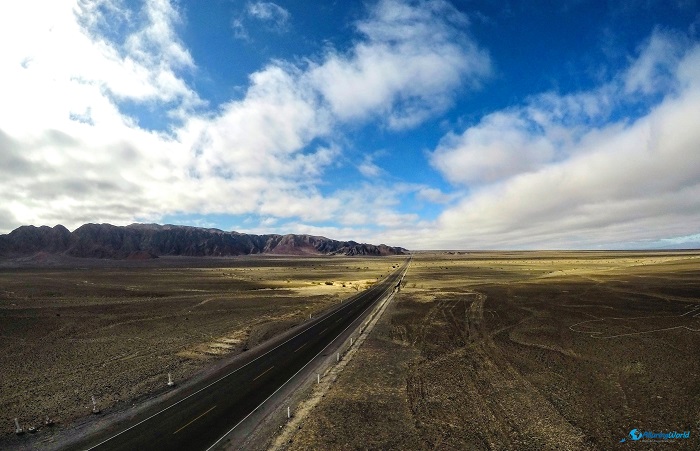
No matter what their purpose was, the Nazca Lines are a testament to the ingenuity and creativity of the historic Nazca people, which serve also as a reminder of the rich and complex history of Peru. This majestic masterpiece is made up of a variety of different types of figures, including straight lines, which are the most common type of Nazca Line and they can be up to 30 m (98 ft) wide, stretching for many kilometers.
The second type is geometric figures which include triangles, trapezoids, and circles, quite often arranged in complex patterns. Most interesting are the animals ones, and they include a variety of animal figures, including hummingbirds, monkeys, spiders, whales, and lizards, and some of these figures can be up to 300 m (984 ft) long. Furthermore, some plants include a few plant figures, such as flowers and trees.
And last, but not least, are the abstract symbols which include a few abstract symbols, such as spirals and zigzags. As mentioned previously, the Nazca Lines are located in the Nazca Desert, which is a dry region in southern Peru, and the desert is covered in a thin layer of pebbles, which made it for the Nazca people to create easily these lines and leave their footprint for the rest of the world and all future generations to admire.
What the Nazca people did, was remove the pebbles to reveal the lighter-colored sand underneath, and with the different movement and further imagination of the people, we are nowadays admiring a work of art that cannot be seen anywhere else. Due to their significant importance, the Nazca Lines are a UNESCO World Heritage Site, and one of the most popular tourist destinations in Peru, as they can be seen from airplanes or nearby hilltops.
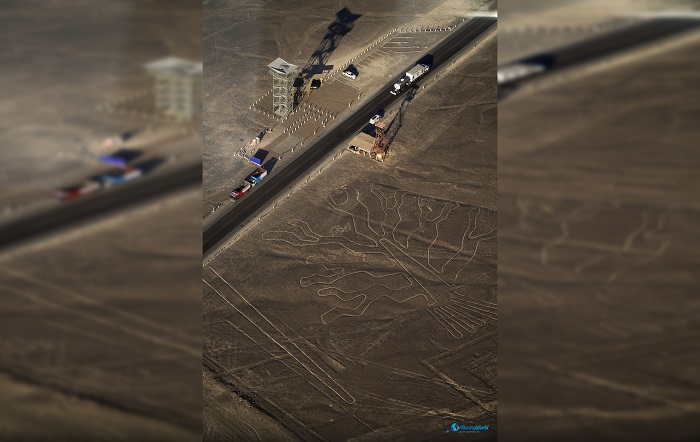
To this day, the purpose of the Nazca Lines is still unknown. There are many theories about what they might have meant to the Nazca people, or if they would serve for something in the future, and yet no one knows nor can say with 100% certainty.
Of course, there are many theories, among which some of the most popular ones include: the lines were astronomical calendars, they were religious symbols or works of art, some saying that the lines were used for ritual purposes, such as communicating with the gods or ancestors, and some out-of-this-world theories like the lines being landing strips for alien spacecraft.
Still, the Nazca Lines are a mystery that has fascinated people for centuries, and they are a testament to the ingenuity and creativity of the Nazca people, serving as a reminder of the rich and complex history of Peru. In recent years, archaeologists have used new technologies, such as drones and satellite imagery, to learn more about these lines, and they have helped to identify new lines and to better understand the purpose of their existence.
All in all, being a valuable archaeological resource, they provide us with a glimpse into the culture and beliefs of the Nazca people, while at the same time serving as a reminder of the power the human creativity and ingenuity. They indeed are a truly amazing and enigmatic site while continuing to fascinate and puzzle people to this day.

